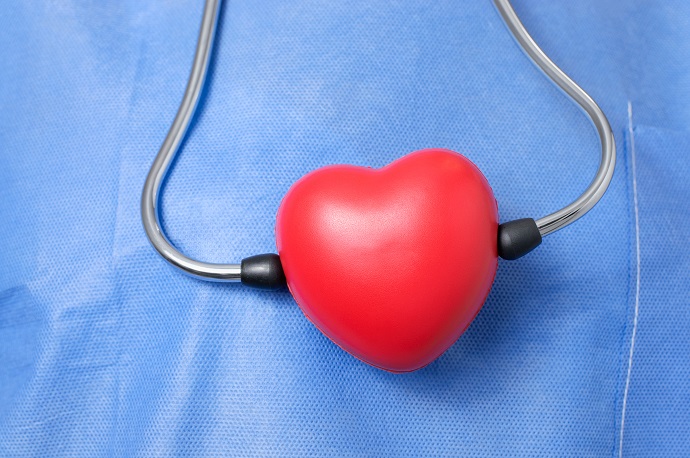Transradial, Same Day Discharge Cardiac Care Drops Costs by $3.7K
Transradial, same day discharge percutaneous catheter insertions reduced cardiac care costs by $3,700, indicating more efficient methods for new bundled payment models.

Source: Thinkstock
- From acute myocardial infarctions to coronary artery bypass grafts initiatives, recent Medicare bundled payment models have providers focusing more on reducing healthcare costs and improving care quality for a range of cardiac care episodes. But a new study in the JACC: Cardiovascular Interventions revealed that using the wrist as the surgical site and same day discharge could significantly decrease cardiac care costs related to percutaneous catheter insertions (PCIs) without taking away from care quality.
Using data from Medicare claims and the National Cardiovascular Data Registry CathPCI Registry between July 2009 and December 2012, researchers found that performing a transradial intervention rather than transfemoral intervention saved hospitals about $961.
Discharging the patient on the same day also significantly reduced cardiac care costs. Hospitals cut costs by $3,502 for same day discharges compared to patients discharged a day or more after the PCI.
As a result, hospitals that favored transradial interventions coupled with same day discharges saved almost $3,700 over the studied period compared to hospitals that favored more common transfemoral and non-same day-discharge PCI pathway.
In addition to reducing cardiac care costs, transradial interventions modestly improved care quality. In-hospital bleeding occurred in 2.8 percent of PCI cases, but only 1.4 percent went through a transradial procedure versus 3 percent undergoing a transfemoral PCI patients.
READ MORE: New Rules for Bundled Payment Models for Cardiac, Hip Care
Transfusion and other vascular complication rates were also lower among PCI patients that received the procedure through the wrist versus the groin.
PCI patients that underwent a transradial pathway also had shorter hospital days by 0.2 days compared to the transfemoral PCI group.
Study results suggested that modifying the surgical site and discharge plan for cardiac care could help providers succeed in alternative payment models, such as cardiac care bundled payment models.
“As participation of hospitals and practices under these alternative payment models increases, providers will need to embrace these changes and identify areas of opportunity to maintain a competitive advantage,” researchers wrote.
“This study of index PCI hospitalization cost across various PCI care pathways should guide hospitals in reducing costs of index PCI care and conserve resources that could be reallocated more efficiently for downstream costs of care in the era of bundled payments.”
READ MORE: Understanding the Value-Based Reimbursement Model Landscape
Costing about $10 billion annually, PCIs are the most expensive cardiovascular procedures and the third more expensive surgical procedure, researchers stated.
To reduce cardiac care costs, CMS included several cardiac care episodes in the Bundled Payments for Care Improvement (BPCI) initiative, including PCIs. Through the alternative payment model, participating hospitals received a set amount for the procedure and 90 days after discharge. Since the start of the year, participants are also financially accountable in the event that PCI costs exceed the bundled payment, meaning they must repay CMS for some financial losses.
Recently, the federal agency announced additional cardiac care-specific bundled payment models, including the acute myocardial infarction model, which contains PCI episodes. The models will qualify as Advanced Alternative Payment Models under the Quality Payment Program.
CMS also implemented the Two-Midnight policy to combat high cardiac care costs related to PCIs. Under the Medicare reimbursement rule, CMS would only reimburse providers at the inpatient rate if patients needed to spend more than two nights in the hospital.
The federal agency designed the rule to discourage providers from ordering short inpatient stays for procedures that could be billed as an outpatient service. The policy also encourages hospitals to discharge PCI patients sooner since outpatient rates are lower than inpatient rates.
READ MORE: Key Ways to Improve Claims Management and Reimbursement in the Healthcare Revenue Cycle
The combination of stricter bundled payment model budgets and lower outpatient Medicare reimbursement rates has put a new light on efficient cardiac care. The study showed the switching to the wrist surgical site along with same day-discharge is the key to cutting costs and improving quality.
Researchers found that if hospitals shifted 100 PCI cases every year to the transradial intervention with same day-discharge, the facility would save up to $350,000,
Converting 30 percent of PCI patients would potentially result in $1 million in savings annually.
“These potential savings are meaningful and offer insight to hospitals to help them modify staffing patterns or initiate SDD [same day discharge] protocols,” added researchers.
Despite possible cost savings, the study showed that transradial interventions only occurred in 9 percent of the 279,987 PCI cases studied. Similarly, same day-discharge accounted for only 5.3 percent of cases.
As a result, transradial interventions and same day-discharge was the least used PCI pathway with just 4.1 percent of cases.
On the other hand, the most common PCI procedure was transfemoral interventions with non-same day-discharge with 86.9 percent of cases.
Transradial, same day-discharge PCI adoption rates may have been low between 2009 and 2012. But as new cardiac care bundled payment models mature, more providers may be looking to alternative PCI methods to succeed under a set budget.
